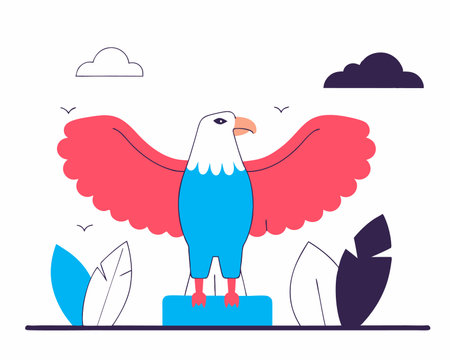Understanding Avian Intelligence
Birds have long fascinated scientists and bird enthusiasts alike with their remarkable abilities, from intricate song patterns to complex problem-solving skills. But what exactly does avian intelligence mean? In simple terms, it refers to the cognitive abilities birds possess—how they learn, remember, adapt, and interact with their environment. This form of intelligence isn’t just about mimicking human behaviors; it’s about how birds navigate challenges in their world. Understanding bird intelligence matters because it reshapes our perception of the animal kingdom and highlights the unique ways different species thrive. For many Americans, birds are not only backyard companions but also symbols of nature’s ingenuity. By exploring the science behind their smarts, we gain insight into both their survival strategies and their significance in our daily lives.
2. How Scientists Study Bird Brains
Understanding bird intelligence requires a combination of creative research methods and advanced technology. Scientists use a variety of approaches to assess the cognitive abilities of our feathered companions, each providing unique insights into how birds think, learn, and interact with their environment.
Observation: The Foundation of Avian Intelligence Research
Much of what we know about bird intelligence begins with careful observation. Researchers spend countless hours in the field or aviaries, watching birds solve problems, use tools, and even communicate with one another. These natural behaviors provide important clues about their cognitive capacities.
Experimental Studies: Putting Birds to the Test
To dig deeper, scientists design experiments that challenge birds problem-solving abilities. For example, they might present a bird with a puzzle box that can only be opened using a specific sequence of actions or offer food rewards for completing tasks. By analyzing how quickly and creatively different species solve these problems, researchers gain valuable data on learning, memory, and adaptability.
Brain Imaging and Neurological Approaches
Modern technology has revolutionized the study of avian brains. Techniques like MRI (Magnetic Resonance Imaging) allow scientists to look at the structure and activity within the bird brain without causing harm. These imaging studies reveal which brain regions are activated during problem-solving or communication, drawing fascinating parallels between avian and mammalian intelligence.
Overview of Research Methods in Bird Intelligence Studies
| Method | Description | What It Reveals |
|---|---|---|
| Observation | Watching birds in natural or controlled settings | Natural behaviors, social interactions, tool use |
| Experiments | Puzzle-solving tasks and learning challenges | Cognitive skills like memory, reasoning, adaptability |
| Brain Imaging | MRI and other scans to study brain activity/structure | Anatomical features, active regions during tasks |
Together, these research methods create a comprehensive picture of just how smart our feathered friends truly are. Each approach adds another layer to our understanding and helps answer the central question: How do birds think?
![]()
3. Remarkable Bird Behaviors: Evidence of Smarts
Birds are much more than beautiful creatures to watch—they’re also incredibly clever in ways that might surprise you. Over the years, researchers have documented a wide variety of impressive behaviors that reveal just how smart our feathered friends really are. Let’s explore some of the most eye-opening examples of bird intelligence, from problem-solving feats to sophisticated communication.
Problem-Solving Skills
Many birds have demonstrated advanced problem-solving abilities that rival even those of primates. For example, New Caledonian crows are famous for their knack for solving complex puzzles. In laboratory studies, these crows have been observed using a series of steps to retrieve food rewards—such as bending wires into hooks or stacking objects to reach an out-of-reach treat. Even urban pigeons and sparrows have shown the ability to learn patterns and adapt their strategies when faced with new challenges.
Tool Use in the Wild
The ability to use tools was once thought to be unique to humans, but certain bird species have proven otherwise. Woodpecker finches from the Galápagos Islands use twigs or cactus spines to extract insects from tree bark. Similarly, Egyptian vultures use rocks to break open ostrich eggs—a skill passed down through generations. These behaviors not only highlight birds’ ingenuity but also suggest a high level of learning and cultural transmission within flocks.
Complex Communication
Birds excel at communicating with one another in ways that go beyond simple calls or songs. Parrots, for instance, can mimic human speech and even understand context, responding appropriately to questions or commands. Songbirds craft intricate melodies to attract mates and defend territory, often improvising or adjusting their tunes based on social feedback. Ravens have been observed “speaking” to each other through gestures and vocalizations when cooperating on tasks, showing a remarkable ability for teamwork and shared understanding.
What These Behaviors Tell Us
The impressive range of cognitive skills displayed by birds is changing the way scientists—and the general public—think about animal intelligence. By observing problem-solving, tool use, and communication in our feathered companions, we gain valuable insight into how intelligence evolves across different species. It’s clear that birds deserve their reputation as some of nature’s sharpest minds.
4. Comparing Bird and Mammal Brains
When it comes to intelligence, many people automatically think of mammals—especially primates like chimpanzees or dolphins. But recent research reveals that birds possess remarkably complex brains, even though they are structured quite differently from those of mammals. Understanding these differences helps us appreciate the unique ways our feathered companions process information and interact with their environment.
Brain Structure: Birds vs. Mammals
| Feature | Bird Brain | Mammal Brain |
|---|---|---|
| Main Thinking Area | Pallium (instead of neocortex) | Neocortex |
| Brain Size (relative to body) | Often large for body size (e.g., crows, parrots) | Varies widely; generally larger in primates |
| Neuron Density | Very high in some species (crows, parrots) | High in primates, especially humans |
| Cortical Folds (“wrinkles”) | Smooth, less folded surface | Highly folded (increases surface area) |
The Pallium: The Avian “Smart Center”
Mammals rely on the neocortex for complex thinking, but birds have a region called the pallium. While the pallium lacks the visible folds of a mammalian neocortex, studies show it is packed with neurons and capable of supporting advanced cognitive tasks—such as problem-solving, using tools, and even understanding abstract concepts.
What Do These Differences Mean?
The different brain structures do not mean one group is inherently smarter than the other. Instead, birds and mammals have evolved unique solutions to similar challenges. For example, some birds rival primates in tests of memory and reasoning. Despite their smaller brains, the dense packing of neurons in the avian pallium allows for impressive feats of intelligence.
The Takeaway for Bird Lovers
If you share your home with a parrot or observe crows in your backyard, remember that their brains—though different from our own—are marvels of evolution. These differences highlight just how adaptable and intelligent our feathered companions can be.
5. Famous Feathered Geniuses
When it comes to remarkable bird intelligence, a few species and even individual birds have soared into the scientific spotlight. Among them, crows, parrots, and pigeons consistently stand out for their extraordinary cognitive abilities.
Clever Crows: The Masterminds of the Avian World
Crows, especially New Caledonian crows and American crows, are renowned for their problem-solving skills and use of tools. Studies have shown that these birds can fashion sticks into hooks to extract insects from tree bark or crevices. In some experiments, crows have solved multi-step puzzles—demonstrating reasoning abilities comparable to those of young children. Urban legends about crows remembering human faces are grounded in scientific fact; these birds can recognize individuals who pose threats and warn their flock accordingly.
Parrots: Communicators and Copycats
Parrots, particularly African Grey parrots like the famous Alex, have astonished researchers with their verbal skills and comprehension. Alex could identify colors, shapes, and numbers, responding accurately to complex questions. Parrots also excel at mimicking human speech and sounds—a sign of their advanced auditory memory and social learning. Their ability to solve mechanical puzzles and adapt to new situations makes them beloved companions for many Americans.
Pigeons: The Underdogs of Intelligence
Pigeons might not seem like intellectual heavyweights at first glance, but research has shown otherwise. These city dwellers can learn to recognize themselves in mirrors (a test of self-awareness) and distinguish between different artistic styles in paintings. Pigeons have been trained by scientists for decades to carry messages or perform tasks that require memory and pattern recognition. Their adaptability has made them an enduring presence in both urban landscapes and scientific studies.
These feathered geniuses remind us that intelligence isn’t limited to mammals. Whether it’s a crow outsmarting a tricky food puzzle or a parrot understanding our words, birds continue to surprise and inspire us with their unique forms of brainpower.
6. Why Bird Intelligence Matters to Us
Understanding bird intelligence is more than just a fascinating scientific pursuit—it has real-world implications that touch our lives and the planet. The remarkable cognitive abilities of birds inspire us to reconsider how we interact with these feathered companions, both in the wild and at home.
Impact on Conservation Efforts
Recognizing the intelligence of birds strengthens arguments for their protection. Birds are not simply instinct-driven creatures; they demonstrate advanced problem-solving skills, social learning, and even emotional awareness. This knowledge encourages conservationists and policymakers to develop strategies that account for birds’ mental and emotional needs, advocating for richer habitats, the preservation of complex ecosystems, and ethical treatment during research or rehabilitation. By appreciating their intelligence, we create stronger motivation to protect endangered species and maintain biodiversity.
Influence on Pet Ownership
For those who keep birds as pets, understanding avian intelligence transforms the way we care for them. Intelligent birds such as parrots and crows require mental stimulation, social interaction, and opportunities to explore. Knowing this, responsible pet owners can provide enriching environments that prevent boredom-related behaviors and foster well-being. This shift in perspective helps ensure that pet birds live fulfilling, healthy lives—echoing our commitment to treating all animals with respect and empathy.
Deepening Our Connection with Nature
The science behind bird intelligence also invites us to connect more deeply with the natural world. Observing the creativity, adaptability, and communication skills of birds can spark wonder and foster a sense of stewardship toward wildlife. As we recognize birds as sentient beings with unique personalities and capabilities, our appreciation for their role in ecosystems grows. This awareness encourages us to engage in outdoor activities like birdwatching or citizen science projects, strengthening our bond with nature and inspiring future generations to value wildlife conservation.
Looking Ahead: A New Perspective on Our Feathered Friends
In sum, understanding bird intelligence reshapes how we approach conservation policies, enhances the quality of life for pet birds, and deepens our relationship with nature itself. The more we learn about our feathered companions’ minds, the more we realize how much there is to protect—and how much joy there is in connecting with these remarkable creatures.


